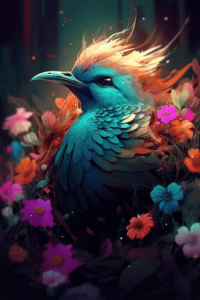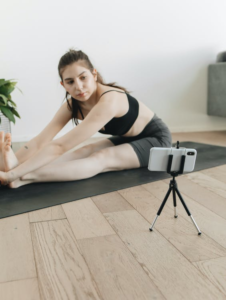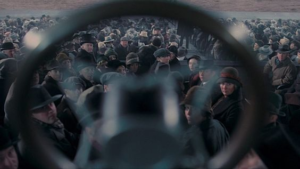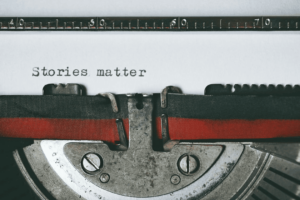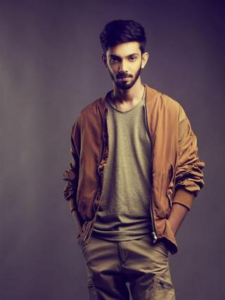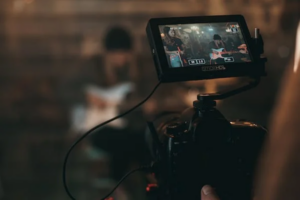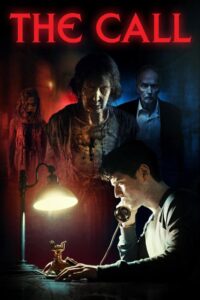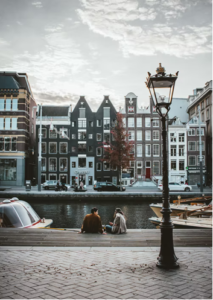A medium shot, mid-shot, MS, or waist-shot is a camera shot that shows an actor from the top of their head to roughly their waist. This camera shot shows less than a wide shot but more than a close-up shot.
Medium Shot Basics
Medium shots give actors and their surroundings similar space on the screen. As neither one dominates, medium shots usually tell viewers to focus equally on characters and their location. They let us see a character’s facial expressions and gestures along with their setting and the action around them.

Image via No Film School
Different Types of Medium Shots
There are several variations on the classic medium shot. These variations include:
- Medium close-up shot: Shows the character from head to chest or shoulders and minimal setting
- Medium long shot: Shows the character from head to around the knees and more setting. Sometimes called the ¾ shot
- Cowboy shot: Shows the character from head to just above the knee, where a cowboy’s gun holster would sit. This term is often used interchangeably with a medium long shot.
- Over-the-shoulder shot: Shows a character captured by a camera that’s behind or over the shoulder of another character. It usually emphasizes the characters’ relationship.
- Two-shot: Shows two characters in a single frame, usually facing one another or sitting side by side
- Point of view shot: Shows action through a specific character’s eyes, providing insight into their perspective
- High-angle shot: Looks down on a subject, giving viewers a feeling of superiority
- Low-angle shot: Looks up at a subject, giving viewers a feeling of powerlessness
Directors can use any variation of a medium shot to convey a wide array of emotions or give the viewers a new perspective. Depending on the specific angle, a medium shot can invoke feelings like loneliness, power, and even wonder.

Image via PremiumBeat
Reasons Directors and Cinematographers Choose Medium Shots
There are several reasons directors and cinematographers use medium shots in their works. These reasons include:
- Capturing character details and location and its scale in a single frame. These shots can give characters context by presenting them inside the cinematic world.
- Capturing a small group of characters in a single frame. These shots suit dialogue, as we can see all the characters talking and their reactions.
- Enhancing body language. These shots show enough of a character’s body to present gestures while being close enough to show subtle movements.
- Showing costume details. These details are cut off from close-ups, but a wide shot is not close enough to show them correctly.
- Showing a character’s reactions to an action occurring off-screen. When used in this way, medium shots can bring about great comedic or dramatic effect.
- Transitioning smoothly to other shots. Medium shots are often used between wide and close-up shots, which helps to make the transition less jarring.
- Showing characters interacting with their locations and props. Since medium shots show locations and props, they let viewers see characters interacting with the elements around them.

Image via PremiumBeat
Medium Shots and How They’re Used
Analyzing how established filmmakers use medium shots and their impact in each scene can help you understand more about how they work. Discover more about medium shots through the examples below.

Image via PremiumBeat
Medium Shot Example: “The Hunger Games”
Director Gary Ross used a medium shot in this “Hunger Games” scene to show Peeta and Katniss’s confusion. The young friends have just learned they must fight one another in the Hunger Games. By using a medium two-shot, Ross also reminds us of their close personal bond. While this shot also shows their emotions, their feelings are then reinforced with close-up shots.
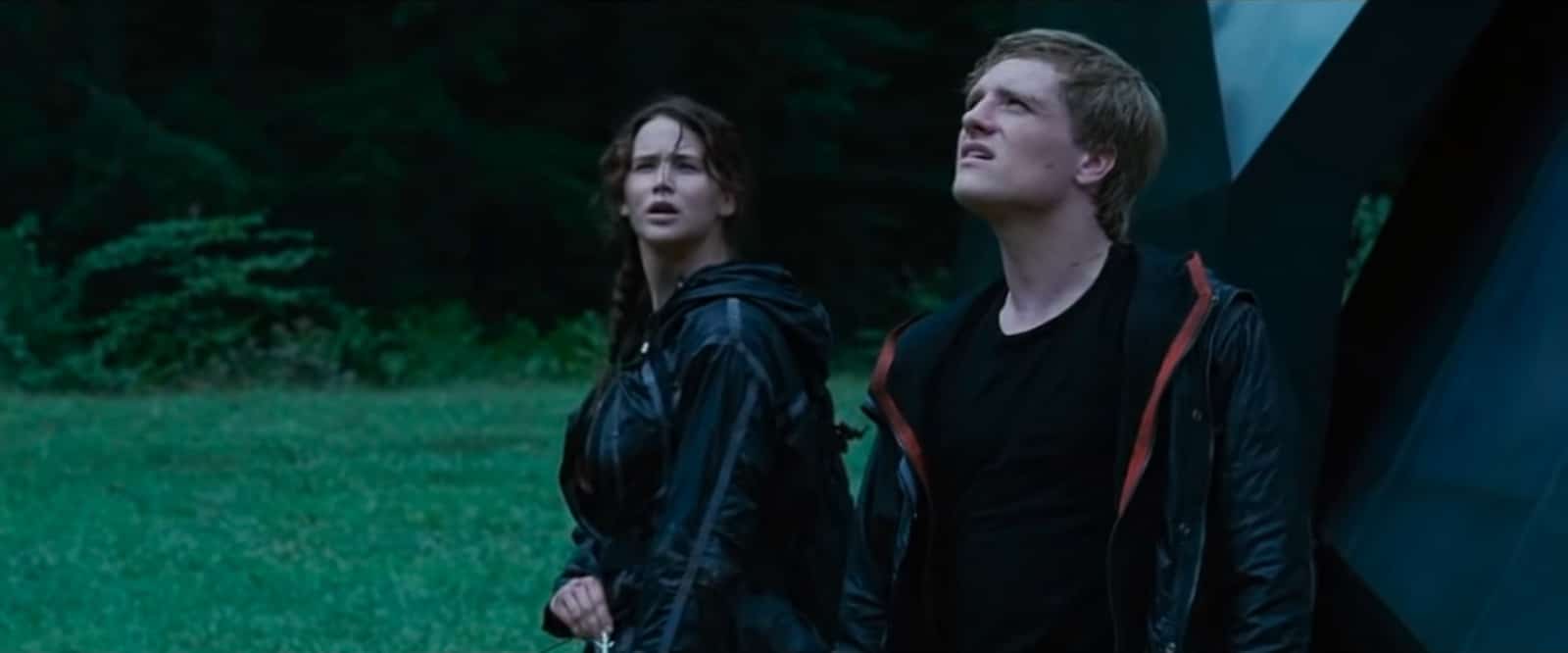
Image via StudioBinder
Medium Shot Example: “Mr. and Mrs. Smith”
“Mr. and Mrs. Smith” gives another example of how a medium shot can frame people with a close relationship. However, in this shot, we see how a medium shot can show a sexual connection. We see John and Jane’s facial expressions as they look at one another and observe their body language. Their legs are nearly touching, and the attraction is obvious thanks to the medium shot.
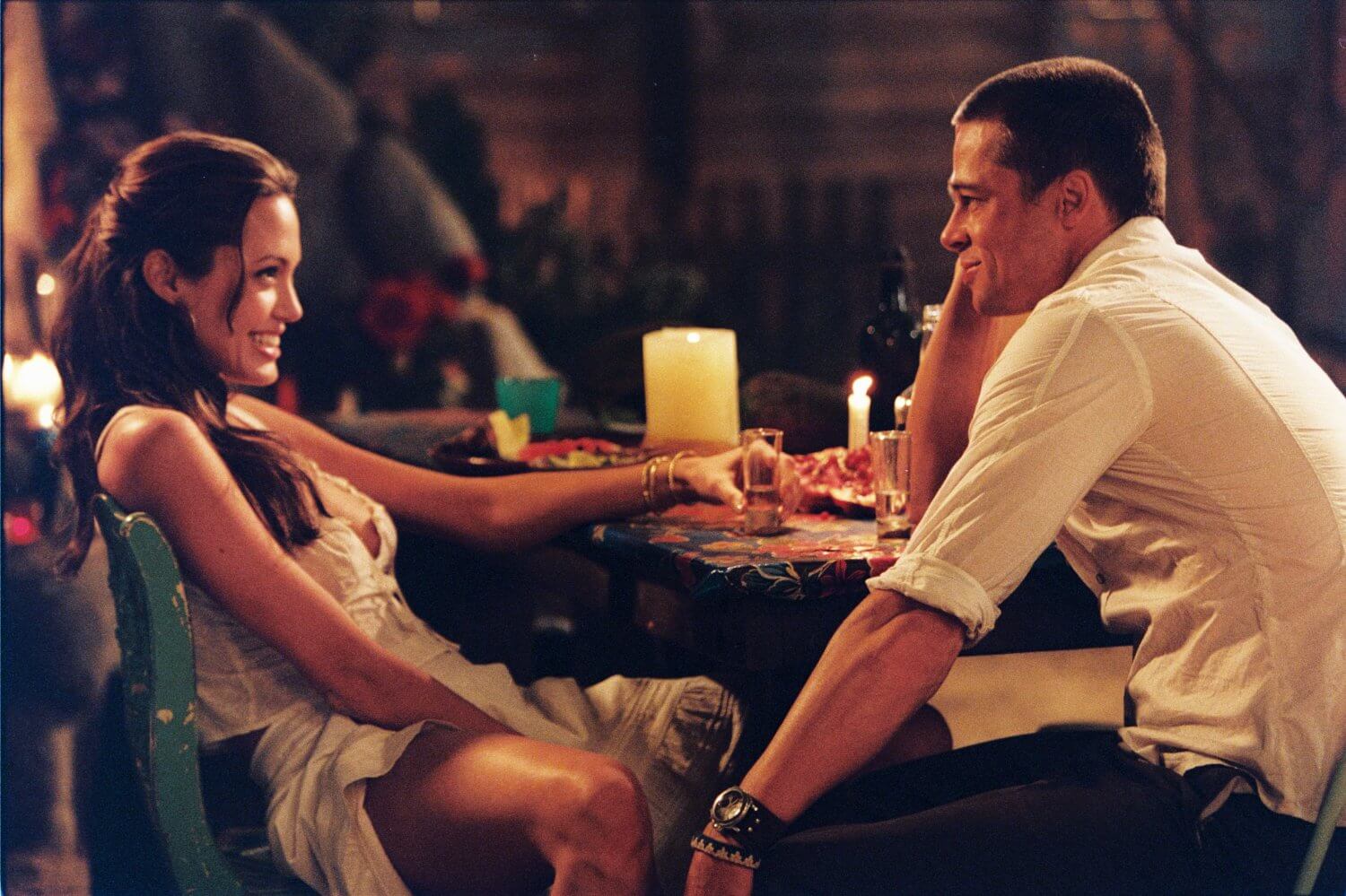
Image via StudioBinder
Medium Shot Example: “Lost in Translation”
Sofia Coppola’s “Lost in Translation” is a two-hander film focused on the unlikely relationship between Bob and Charlotte. That makes it perfect for medium shots like the one below. This shot depicts intimacy by showing Charlotte’s head resting on Bob’s shoulder. The characters are closer than Peeta and Katniss, indicating they are more than friends. However, they do not have the overt chemistry shown between John and Jane Smith.

Image via No Film School
Medium Shot Example: “Jurassic Park“
Stephen Spielberg uses a medium shot here to show his characters lost in the jungle. This wild setting is just as vital as the characters are. The medium shot lets us see their scratched faces and dirty clothes, suggesting their time in this strange setting has been an ordeal. These details might be lost in a wider shot. Similarly, we would lose that important setting in a close-up.
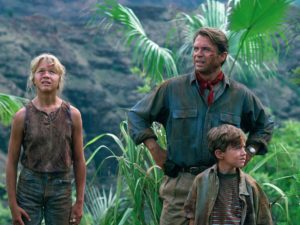
Image via StudioBinder
Medium Shot Example: “Saving Private Ryan“
Another important medium shot from Stephen Spielberg, this scene shows Private Ryan observing the grave of Captain Miller and the other men who died in World War II. We see him age, emphasizing the way these deaths impacted him throughout his life. The balance of the medium shot provides the intimacy of a close-up and the grandeur of a wide shot.
Medium Shot Example: “Creed”
Medium shots are ideal for action sequences like the boxing scenes in “Creed.” They put us close enough to observe the fighter’s facial expressions by making sure we don’t miss any of the punches. Close-ups let us look into the eyes of the fighters, helping us feel the tension in the situation, but medium shots dominate as the scene plays out.
Medium Shot Example: “North by Northwest”
This iconic scene from Alfred Hitchcock’s “North by Northwest” also demonstrates how medium shots can capture action and emotions. The setting gives us a real sense of the danger Roger Thornhill is in. We can see he is alone with no one around to help him. Observing his face, we can also see how conscious he is of the imminent threat. We observe the fear rising in his face as the crop duster gets ever closer.
Medium Shot Example: “The Avengers“
This video features several medium shots, including the final classic hero pose. This shot shows the Avengers together and united. The medium shot lets us see the resolve on their faces and the details of their iconic costumes.
Medium Shot Example: “The Princess Diaries”
This medium shot from “The Princess Diaries” shows how this camera shot can be used for comedic effect. It shows Mia Thermopolis trying her hand at fine dining. A scarf ties her to the chair, encouraging her to sit up straight. Various pieces of silverware and a selection of glasses surround her plate. Her eyes close in concentration. The medium shot ensures we can see all the small details that work together in this humorous scene.
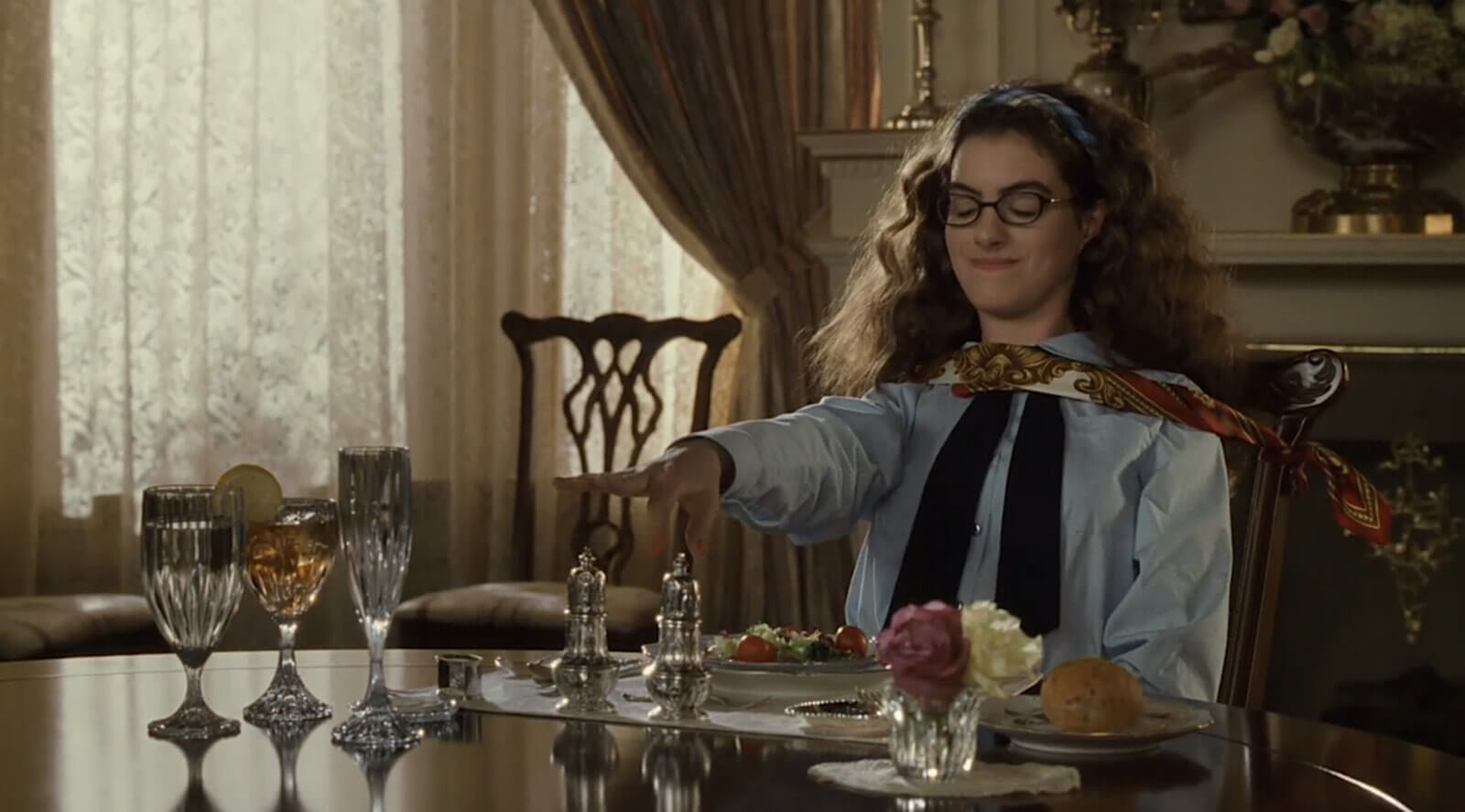
Image via StudioBinder
Medium Shot Films
Most films use medium shots in combination with various other camera shots. However, some films, such as John Ford’s “The Searchers,” rely on medium shots so much that they are classified as medium shot films.
The scene above shows the character Ethan returning home. Its medium shots tell us much about his relationships with the other characters while highlighting the dramatic Western setting.
In the clip above, Ford uses his medium shots to drive the action. These shots help us follow the gun battle and feel invested in the characters fighting it. Including the rugged setting reinforces the role of the gun battle in the Wild West.
The clip above uses medium shots for dramatic impact. As we see Ethan scoop Debbie up in his arms, we can observe the attraction on their faces. The combination of action and emotion against the dramatic Western backdrop sweeps viewers up in the scene’s romance.
Medium shots are one of the most commonly used shots in film, so all aspiring filmmakers should understand how and when to use them. If you’re interested in learning more about medium shots, apply to Nashville Film Institute to gain professional qualifications as a filmmaker.
